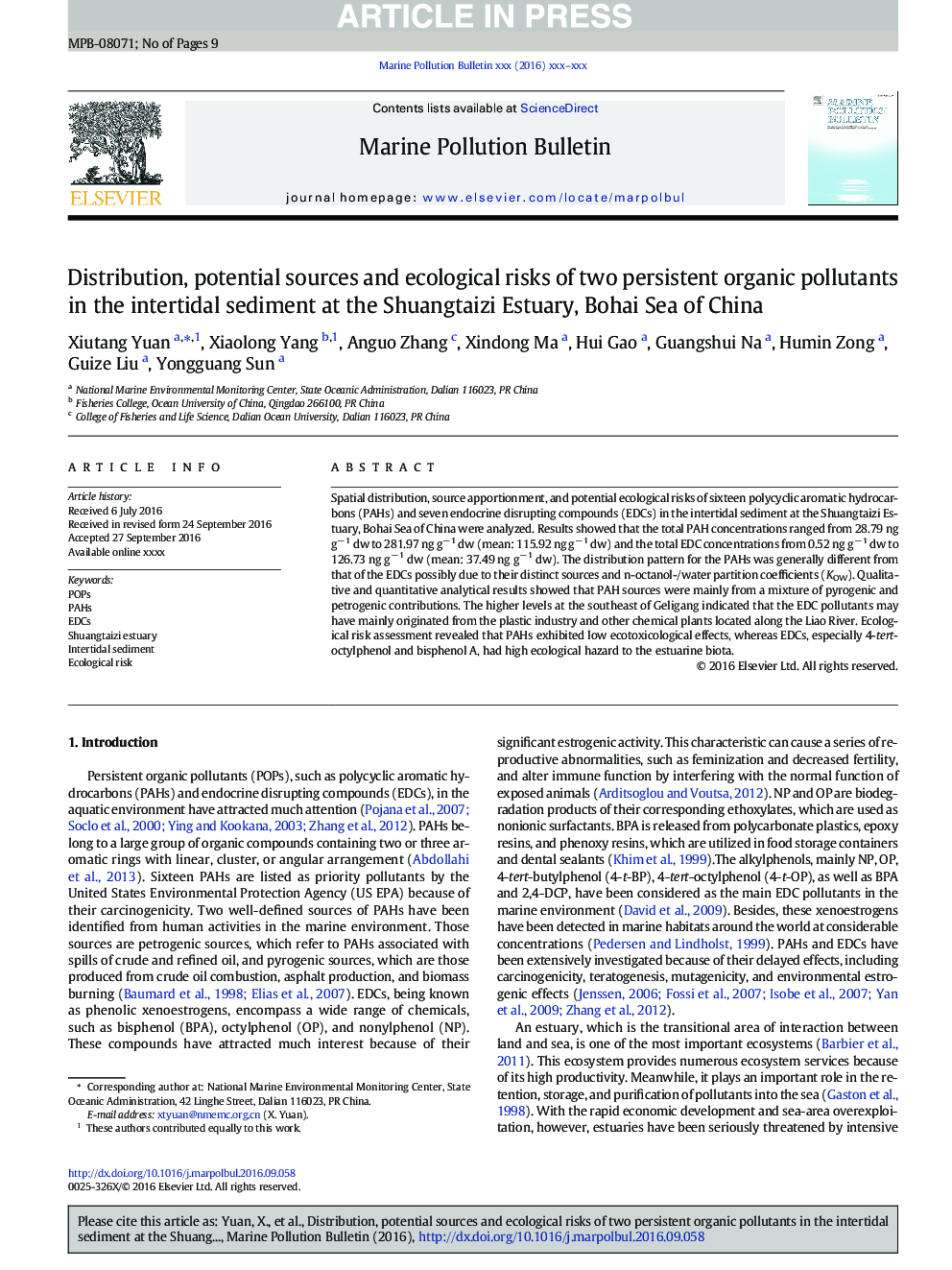| Article ID | Journal | Published Year | Pages | File Type |
|---|---|---|---|---|
| 5757805 | Marine Pollution Bulletin | 2017 | 9 Pages |
Abstract
Spatial distribution, source apportionment, and potential ecological risks of sixteen polycyclic aromatic hydrocarbons (PAHs) and seven endocrine disrupting compounds (EDCs) in the intertidal sediment at the Shuangtaizi Estuary, Bohai Sea of China were analyzed. Results showed that the total PAH concentrations ranged from 28.79 ng gâ 1 dw to 281.97 ng gâ 1 dw (mean: 115.92 ng gâ 1 dw) and the total EDC concentrations from 0.52 ng gâ 1 dw to 126.73 ng gâ 1 dw (mean: 37.49 ng gâ 1 dw). The distribution pattern for the PAHs was generally different from that of the EDCs possibly due to their distinct sources and n-octanol-/water partition coefficients (KOW). Qualitative and quantitative analytical results showed that PAH sources were mainly from a mixture of pyrogenic and petrogenic contributions. The higher levels at the southeast of Geligang indicated that the EDC pollutants may have mainly originated from the plastic industry and other chemical plants located along the Liao River. Ecological risk assessment revealed that PAHs exhibited low ecotoxicological effects, whereas EDCs, especially 4-tert-octylphenol and bisphenol A, had high ecological hazard to the estuarine biota.
Related Topics
Physical Sciences and Engineering
Earth and Planetary Sciences
Oceanography
Authors
Xiutang Yuan, Xiaolong Yang, Anguo Zhang, Xindong Ma, Hui Gao, Guangshui Na, Humin Zong, Guize Liu, Yongguang Sun,
